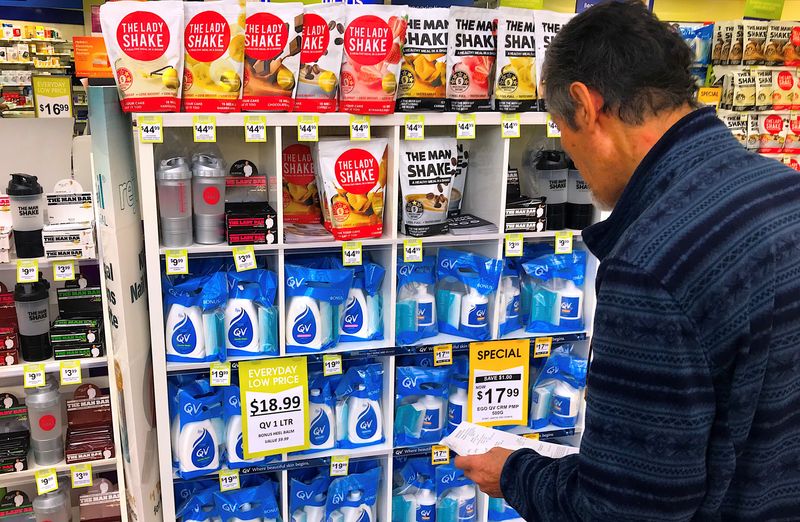By Stella Qiu
SYDNEY (Reuters) – Australia’s inflation slumped to a near two-year low in November and core inflation also eased sharply, a softer-than-expected result that reinforced market expectations interest rates would not need to rise any further.
Data from the Australian Bureau of Statistics on Wednesday showed its monthly consumer price index (CPI) rose at an annual pace of 4.3% in November, the slowest pace since January 2022. That was down from 4.9% in October and under market forecasts of 4.4%.
For the month, CPI rose 0.3%.
A closely watched measure of core inflation, the trimmed mean, rose an annual 4.6%, down sharply from 5.3% in November, a major relief for policymakers who had forecast the gauge to fall to 4.5% by December.
The slowdown was driven by petrol prices, which fell 0.5% on a monthly basis, and clothing and footwear discounts during the Black Friday sales. The CPI excluding volatile items and holiday travel slowed to 4.8%, from 5.1%.
“Today’s fall in the trimmed mean and the core measure, below 5%, confirms that the disinflation narrative remains firmly in place and expectations of RBA rate cuts in 2024,” said Tony Sycamore, market analyst at IG.
He said that if the fourth quarter inflation report, due in late January, paints a similar picture for consumer prices, markets could bring forward expectations of the first rate cut from the Reserve Bank of Australia (RBA) to June from August currently.
Market reaction to the data was muted as liquidity is still thin in the new year. The Australian dollar was flat at $0.6687, while three year bond futures gave up 3 ticks to 96.30 after the data.
Futures markets still imply almost no chance of the RBA tightening policy further, while pricing in relatively modest 50 basis points of easing for all of 2024.
The RBA has already raised interest rates by 425 basis points to a 12-year high of 4.35% since May 2022 to tame runaway prices. It also left the door open to further tightening if necessary to meet its annual inflation target of 2-3%.
Data also out on Wednesday showed job vacancies in Australia fell only slightly in the three months to end-November, suggesting demand for workers remained strong.
STICKY SERVICES
Governor Michele Bullock has warned of increasingly homegrown and demand-driven price pressures, even as inflation has retreated from its near 8% peak in late 2022.
Indeed, the November report, which provided an update on more services in the final quarter of the year, showed prices for hairdressers, restaurant meals and takeaway food were up 6.3%, 4.6% and 7.1% annually.
Rent inflation accelerated to 7.1% in November from 6.6% the previous month while electricity prices rose by a brisk annual rate of 10.7% as the impact of government subsidies unwound.
Insurance prices rose 16.3% in November from a year ago, speeding from 14.7% in October.
Tapas Strickland, head of market economics at National Australia Bank, said the data challenges NAB’s view of another rate rise in February, but the sticky services inflation does not support any rate cuts in the first half of the year.
“So the biggest insight from today’s release was nothing really challenges RBA’s forecast, but also nothing really to say the pace of disinflation is faster than the RBA thought.”
(Reporting by Stella Qiu; Editing by Shri Navaratnam)
